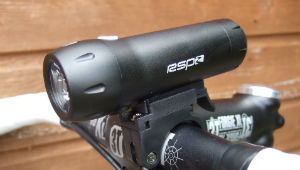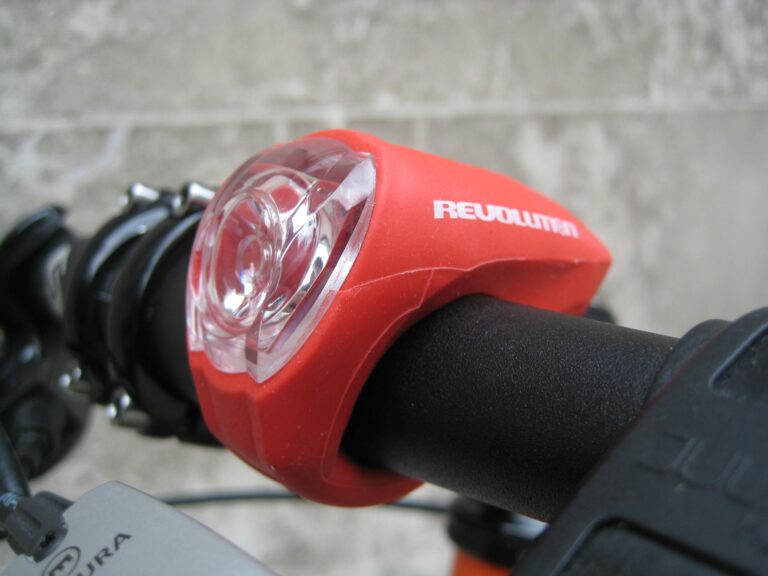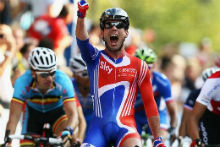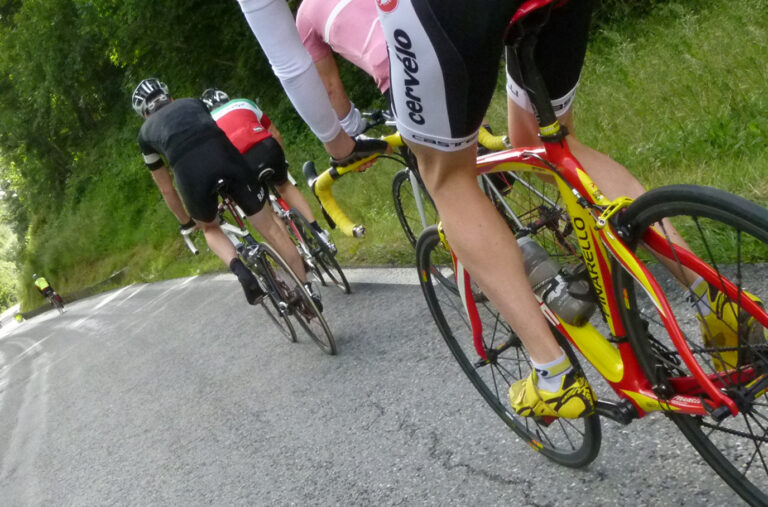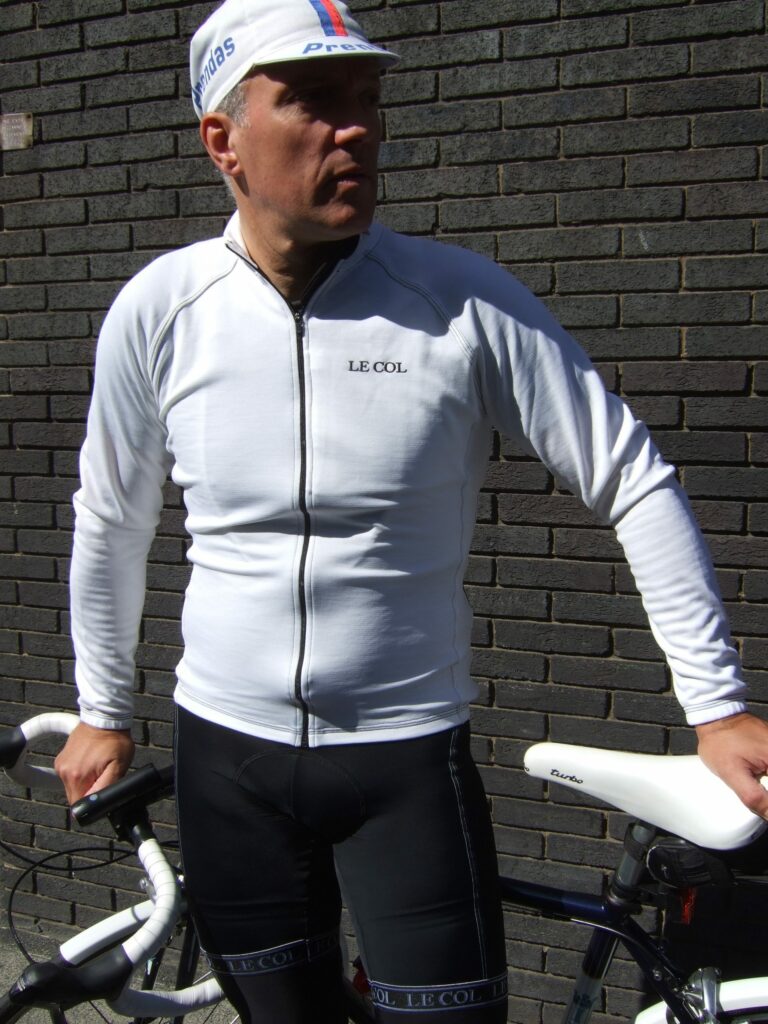Over the past few weeks we’ve learned how to identify the key demands of a sportive, the importance of goal setting, how to gauge the intensity of your rides and how to set up a series of personalized training zones.
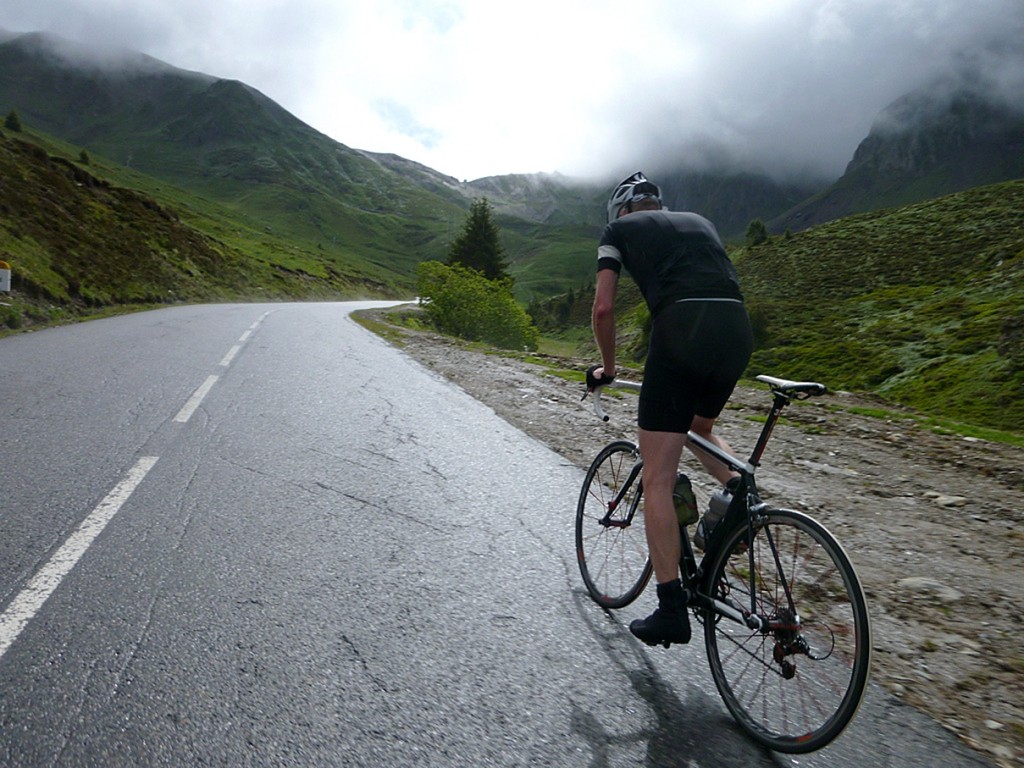
Now it’s time to put all these elements together and formulate a structured training plan that will get you fitter and faster on the road to completing your first century sportive.
Coaches prepare riders for a traditional ‘season’ by splitting the training year into ‘cycles’ and concentrating on improving various components of fitness and technical skills at different times of the year. This is called ‘peridodization’ and is a very effective method employed in many sports to optimize training from beginner to elite level. It’s something we’ll look at further down the line in relation to preparing for a road-race season.
But in the world of cyclosportives, the calendar is now so thoroughly congested that many great events take place outside of what used to be considered the traditional ‘season.’ Also the growing number of popular events in all parts of the hemisphere means that the keen sportive rider has the option of riding and preparing for an event at any time of the year.
So in the real world it’s more often a case that the rider will enter an event with the greatest intention of using it as a goal to start training for, do nothing to prepare for it until about 12 weeks before the event is due to take place, panic, and realize its about time they got busy with some preparation. Clearly an annual, periodized plan is not much use in this situation even though I’d advocate adopting one in the longer term. So we’re going to deal with this more real-world scenario of an upcoming event that you need to prepare for fast.
Here we’ll use a 12-week preparation plan as an example but as you’ll see from the format, you can extend this as necessary based on the time available before your event.
Setting out
So you want to ride your first 100-mile sportive, you are riding your bike for only a few hours per week and never for more than 40 to 50 miles in a single ride. This is a classic club-cyclist scenario for a rider who enjoys his riding but has never ridden a century. Understandably you find the challenge ahead quite daunting. But as I said in part two this looks a lot easier if you set some interim goals and break the challenge down like this:
End of week four – ride 60miles
End of week eight – ride 75 miles
End of week 12 – ride 100 miles
Which, I think you’ll agree, looks far less daunting as it involves just 15 extra miles per month which is just a few miles week-on-week. As well as that we talked about introducing more fundamental things like bike handling techniques, core strength training and improved nutritional practice which will contribute to further improvements in your general fitness as well as improving your riding.
The next thing you need to do is work out the maximum amount of hours you will be able to train in a week based on your family, work and other commitments. Do this by completing a lifestyle audit for each day of the week, which looks like this:
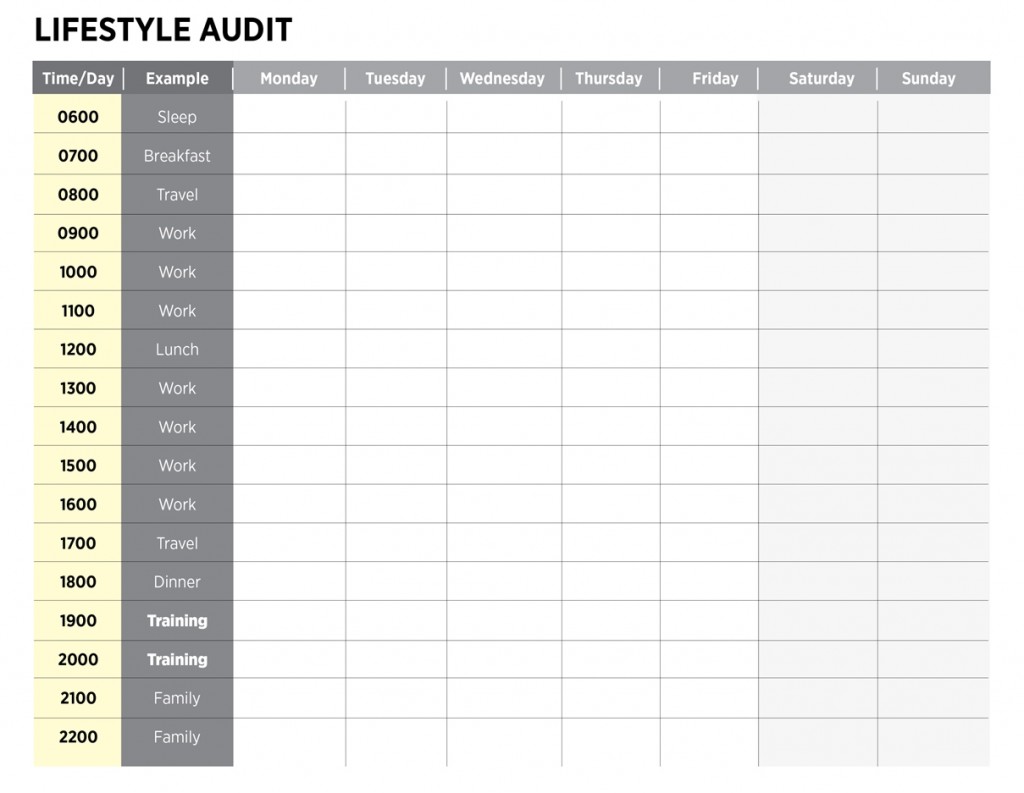
If you highlight which hours are available for training in yellow, you have an instant visual guide of what a typical training week might look like. As an example, Andy Rider, our hypothetical sportive wannabe from week five is married with children and works full time, so is fairly typical of a lot of riders I see whose lifestyle audit looks something like this…
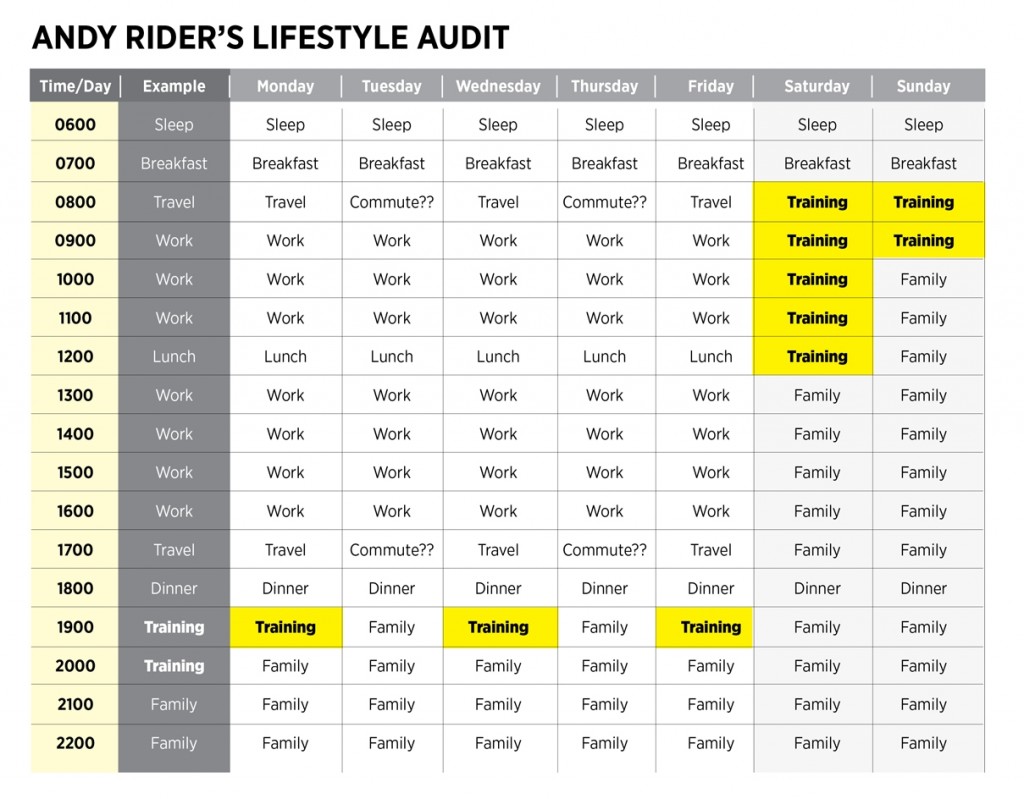
This reflects the fact that he’d like to commute a couple of times per week by bike has a couple of hours midweek training time with one long and possibly one short length ride at the weekend. So Andy has estimated that the maximum number of hours he can train in a good week is 10.
So begin by compiling your own lifestyle audit based on his example. Fill in when you eat, sleep, work, spend time with the family and have time available for training. Don’t worry, you don’t have to commit fully at this stage, and there is rarely a ‘typical’ week, this is just a starting point. When you’re done, highlight the areas you’ve marked as ‘available for training’ in yellow and you have an idea of how much training time is available and what kind of pattern it provides.
The important thing to consider here is that if you have a maximum of 10 hours training you can commit to, but are currently only riding for three or four hours, don’t jump straight in to riding for 10 hours. We’re looking for a smooth progression as you build up to higher volume, thus gradually acclimatizing yourself to the increasing training load. A good place to start is by using a classic stepping stone approach of three weeks build, one-week recovery that would look like this.
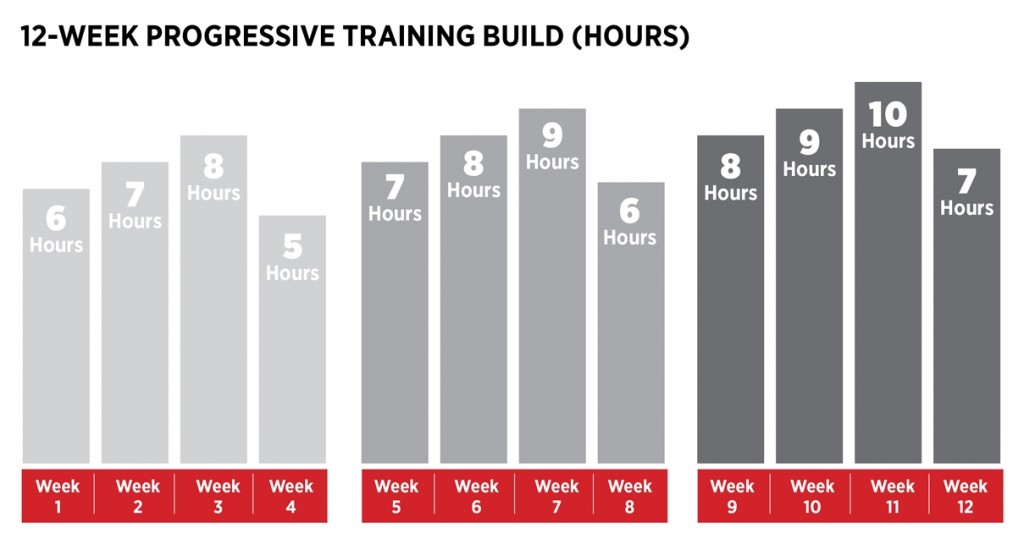 You can see from this diagram the classic ‘progression’ of three weeks gradual increase in training time followed by a one week recovery or easier week to allow your body to repair and adapt to the training your doing.
You can see from this diagram the classic ‘progression’ of three weeks gradual increase in training time followed by a one week recovery or easier week to allow your body to repair and adapt to the training your doing.
You might also be wondering why, if your ultimate goal is to ride 100 miles, your training is defined by hours rather than miles. This is because training time is a far better method of measuring your overall training load than training distance. You’ll be dividing this training time up into various different elements from the training ‘zones’ we’ve already discussed to work on the underlying principles of conditioning which will improve your ability as a rider and help you achieve your target of riding a 100-mile sportive much more efficiently than simply adding on miles week-by-week would do.
Next week we’ll look at dividing up your available time into manageable training sessions based on your personalized training zones.
Part 1: Going for Centuries
Part 2: Breaking down the barriers
Part 3: Goal Setting
Part 4: Intensity
Part 5: Get in the Zone
Part 6: Performance Testing
Part 8: Weekly training plans
Part 9: Be a better climber
About the author:
Huw Williams is a British Cycling Level 3 road and time trial coach. He has raced on and off road all over the world and completed all the major European sportives. He has written training and fitness articles for a wide number of UK and international cycling publications and websites and as head of La Fuga Performance, coaches a number of riders from enthusiastic novices to national standard racers.
Contact: [email protected]

